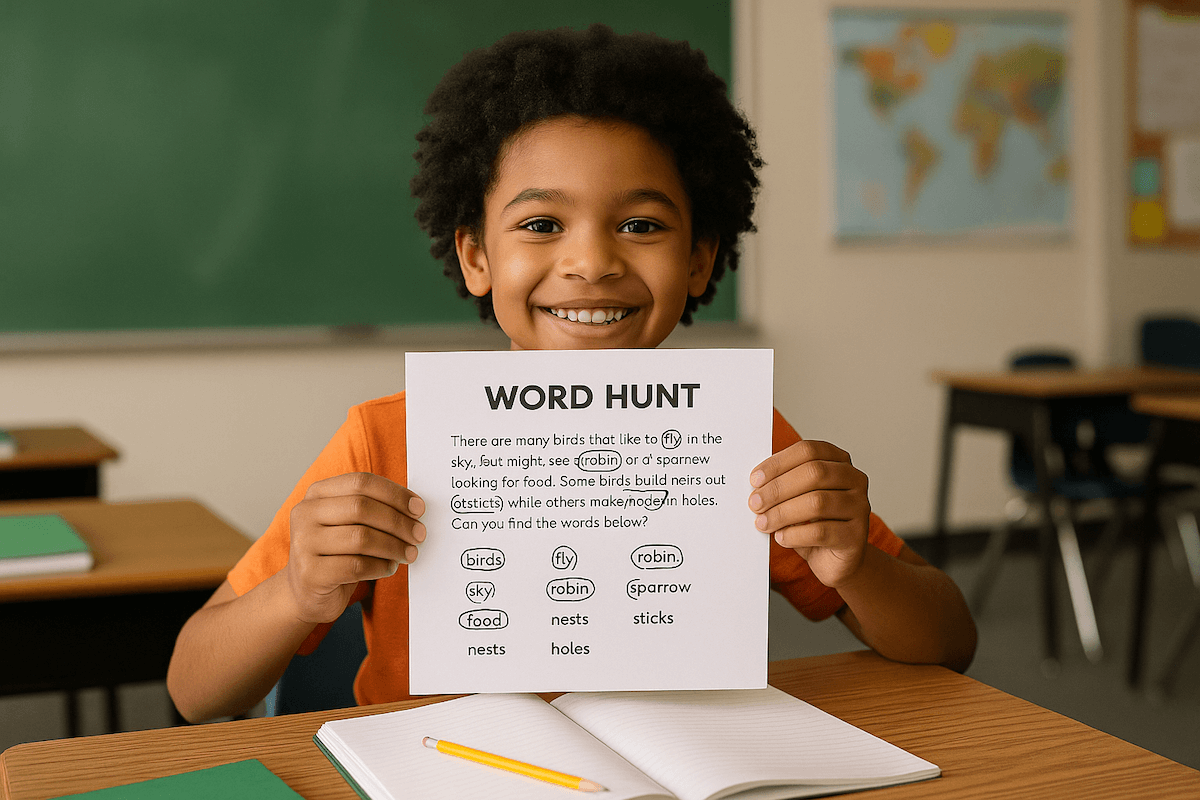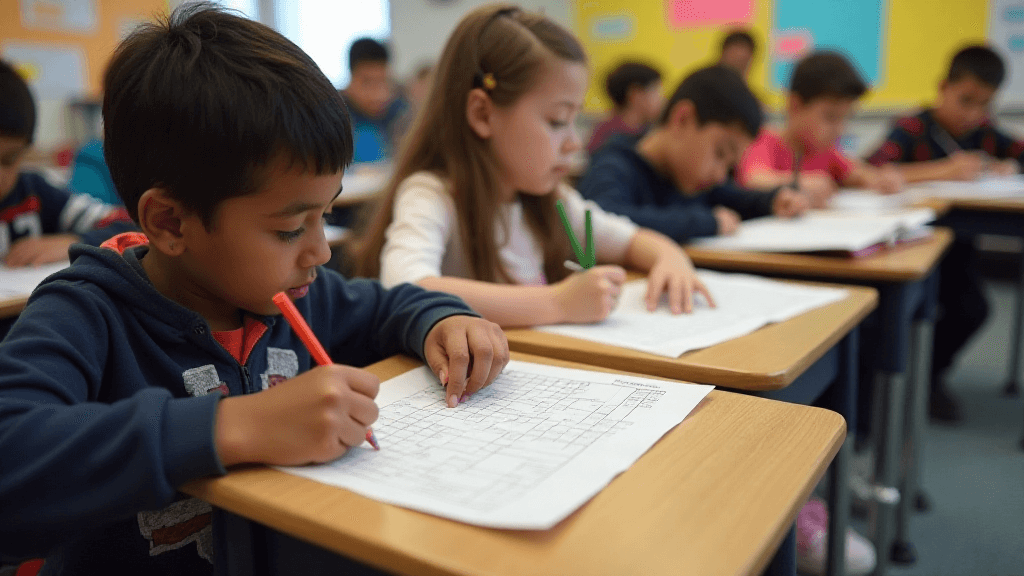
How to Create Effective Science of Reading-aligned Worksheets
Teaching children to read is one of the most crucial jobs we undertake as educators or parents. The shift towards the Science of Reading (SoR) - a body of research that explains how reading works and the most effective ways to teach it - has brought renewed focus to systematic, explicit instruction in foundational skills like phonological awareness and phonics.
In this landscape, worksheets often appear. But do they align with the Science of Reading? Are they just busywork, or can they genuinely support learning?
The answer is: When designed and used effectively, worksheets can be a valuable tool within a Science of Reading-aligned curriculum. They are not the core of SoR instruction, but they can provide essential practice and reinforcement. This post will explore how worksheets fit into SoR, the types that are most aligned, and crucially, how to create worksheets that truly support student learning.
How Worksheets Support Learning in a SoR Approach
Worksheets, when used purposefully, offer several benefits within a structured SoR program:
- Reinforcement: They provide opportunities for students to practice a specific skill that has just been explicitly taught by the teacher (e.g., practicing decoding words with the 'sh' digraph).
- Application: Worksheets allow students a low-stakes environment to apply newly learned rules and patterns independently.
- Informal Assessment: Reviewing completed worksheets can give teachers quick insight into which students grasped the concept and who might need additional support or reteaching.
- Scaffolding: A well-designed worksheet can break down a complex skill into smaller, manageable steps, guiding students through the process.
- Focused Practice: Worksheets can help students concentrate on a single skill or concept without distraction, which is essential when mastering foundational elements.
- Bridging Practice: They can help students transition from oral practice or using manipulatives to working with written symbols (letters, words, sentences).
Think of worksheets not as the main lesson, but as the practice drills after the coach has demonstrated the technique.
Common Types of Science of Reading Aligned Worksheets
Not all reading worksheets align with SoR. Effective SoR worksheets target specific, foundational skills taught in a systematic scope and sequence. Here are some common types, grouped by the SoR component they support, as well as how to create them with Worksheet Creator, where possible:
- Phonological Awareness Worksheets: These focus on sounds in spoken language, often linking to letters.
- Rhyme identification or generation (matching pictures/words that rhyme)
- Syllable counting or segmenting (circling the number of syllables in a word/picture)
- Initial, medial, or final sound isolation (circling pictures that start/end with a specific sound)
- Basic phoneme manipulation (e.g., changing the first sound to make a new word - often includes pictures/letters)
- Phonics Worksheets: These are the most common and directly link sounds to letters and letter patterns.
- Letter-Sound Matching (drawing lines, circling)
- Decoding Practice: CVC, CCVC, CVCC word reading/matching (e.g., match word "cat" to a picture)
- Word Family Practice (sorting words like cat, hat, sat)
- Identifying and underlining specific phonics patterns (digraphs like 'th', 'ch', vowel teams like 'ai', 'ee')
- Word Sorts (sorting words by short/long vowel sounds, by blend vs. digraph). These are easy to make with our 24, 16, and 10, and 8 word lists.
- Fill-in-the-blank with target phonics words, like our Cloze Worksheet Generator
- Reading decodable words or simple decodable sentences and matching them to pictures or prompts.
- Morphology Worksheets (for later stages): Focusing on meaningful word parts.
- Identifying base words, prefixes, and suffixes.
- Matching prefixes/suffixes to their meanings or to base words to form new words.
- Vocabulary/Comprehension Support Worksheets: When used in SoR, these often support the decoding practice within a decodable text.
- Matching key vocabulary words from the decodable text to simple definitions or pictures.
- Simple, literal comprehension questions about the decodable text (not complex inference tasks separate from the decoding focus). Our Cloze Worksheets with Comprehension Questions and Word Hunt with Comprehension Questions are great examples of this.
Creating Effective Science of Reading Worksheets: It's All About Design and Purpose
Simply printing a worksheet isn't enough. To make a worksheet genuinely effective and aligned with SoR principles, consider these design elements:
- Align Directly with Instruction: The worksheet must reinforce a specific skill or pattern that the student has just learned explicitly. Don't use worksheets to introduce new concepts or practice skills taught weeks ago unless it's for cumulative review.
- Be Targeted and Focused: Avoid "all-in-one" worksheets that jump between multiple unrelated skills. Focus on one or a few closely related concepts per sheet. This helps students solidify a specific pattern or skill.
- Simple and Clear Instructions: Students should be able to understand what to do easily, perhaps with a quick model from the teacher. Use clear language and visuals.
- Clear Layout and Design: Avoid clutter. Use an appropriate, readable font size (especially for younger learners). Ensure any images or visuals are clear and directly support the task, not distract from it.
- Purposeful Tasks: Every item on the worksheet should serve a clear purpose related to the target skill. Avoid tasks that feel like busywork (e.g., coloring pictures that aren't related to the sound/word being practiced).
- Follow Your Scope and Sequence: The skills practiced on the worksheet should fit logically into the systematic order in which skills are taught in your SoR curriculum.
- Include Application: Can the worksheet encourage students to apply the skill in slightly larger chunks, like reading decodable phrases or simple sentences that feature the target pattern?
- Consider Differentiation: Can you easily modify the worksheet for students who need more support (fewer items, tracing support) or more challenge (including slightly more complex words with the pattern, a simple writing task)?
- Prioritize Decodability: If the worksheet involves reading words or sentences, ensure the majority of the words are decodable based on the phonics skills taught up to that point in your sequence, along with perhaps a few high-frequency sight words if appropriate for the level.
Putting Worksheets in Perspective: They Aren't the Whole Story
It's crucial to remember that even the best-designed worksheet is only one component of a robust Science of Reading program. Worksheets are practice, not the primary method of instruction. They are not a substitute for:
- Explicit, systematic, teacher-led instruction: New skills must be directly taught and modeled.
- Oral practice: Phonological awareness is primarily an auditory skill practiced through games and activities, not just paper-based tasks.
- Multi-sensory activities: Engaging multiple senses helps many students learn and retain information.
- Reading Decodable Texts: Applying skills in connected text is essential for building fluency and transferring skills to reading.
- Rich language and comprehension activities: SoR is not just phonics; building vocabulary and comprehension is vital, though often addressed through reading aloud and discussion, not solely via worksheets.
Effective SoR classrooms integrate worksheets thoughtfully into a lesson that includes modeling, guided practice, and opportunities for application in authentic reading situations.
Conclusion: Making Every Worksheet Count
Worksheets can be valuable allies in the journey towards literacy when grounded in the principles of the Science of Reading. By ensuring they are purposeful, aligned with explicit instruction, focused on specific skills, and used as supplementary practice rather than the main event, you can create worksheets that genuinely support your students' reading development.
Thoughtfully designed practice reinforces learning, builds confidence, and helps solidify the foundational skills necessary for children to become skilled and confident readers. Make every worksheet count!

